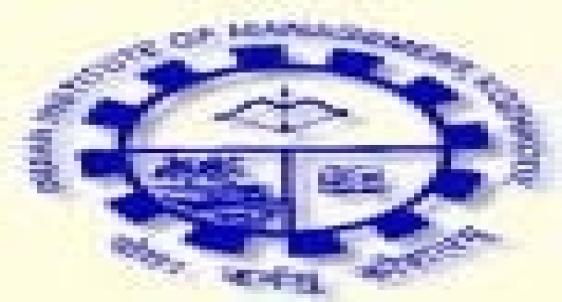
Mr. Pelle is the Vice President of Perfetti Van Melle Group Worldwide, COO of the Business Unit - Russia and South Asia and Chairman of the company's Indian Operations.
Perfetti is one of the world's largest confectionary groups with sales of close to $ 1.5 billion and its products are sold in more than 130 countries. Perfetti has a strong presence in India and it's one of the fastest growing FMCG brands. Center fresh, Alpenlibe, Happy Dent and Chlormint are some of the popular brands.
Mr. Pelle took over the charge of the company in 1998, and increased its turnover five folds. Besides having other enviable records in Sales, Marketing, Manufacturing and Supply Chain, Mr. Pelle is a recipient of the Knight Commander award from the Italian President. He has also authored a Book named "Understanding Emerging Markets".
Mr. Pelle's talk revolved around online advertising and he set the context by drawing on the thoughts that advertising brought to our minds – those of creativity, consumer preferences, market research and reaching out to consumers. Advertising hinges on images that draw our attention and sustain it. Given the increasing amount of time all of us are spending online, internet has evolved into a potent medium for advertising.
Talking about global trends, Mr. Pelle mentioned that advertising as a whole has growing by 6% annually from the current figure of $407 billion. Although traditional media still holds the meat of the budget, the share of online media is gradually increasing. Online advertising gained momentum only by the late 90s, but it went bust along the dot com bubble. The numbers only started to look up again about 5 years back. Currently internet makes up about 6% of the ad budget globally which totals to just less than $30 billion. The figures are marginally different in the US however, with 6% of the ad money and 34% of the advertising going into internet.
The growth in advertising content shows an 18% growth in internet advertising, which in fact is driving the 5.4% growth across media. Mr. Pelle shared how he felt that internet advertising lent itself to effective marketing, with its low cost, shorter marketing time, high flexibility and precision targeting leading to high impact. The growth of high speed internet and an increase in time spent online have also been important driving factors. He mentioned that there were however some important pre-requisites for such effective advertising – establishing trust with the user, ensuring security, ensuring relevance and hence reducing the irritation arising out of intrusive advertising.
With different agents like dedicated spaces, pop-ups, pop-unders, slider and floaters, interstitials, trick banners and wallpaper ads making up most of internet advertising; there are also a number of ways to measure the efficacy of these agents. Companies mostly use cost per click, cost per impression, Cost per Action or a combination of these. However there are hidden risks in measuring effectiveness, because of rampant click fraud and recycled clicks that come from non – targeted users. Impression fraud – committed by overstating figures was also a risk.
Mr. Pelle compared the global figures of advertising with those in India, where it has grown by 22% to 14600 crore. Print ads made up just less than half of that figure, with high growth rates in non mass media like mobiles, cinema and online ads. Determining the percentage of spending on Ads however, was difficult in India, mostly due to the difference in discounts by the media.
He also added that online advertising poses a greater challenge in India than elsewhere due to low internet penetration and literacy rates that are still not on par with the world. More than a third of the 25.2 million urban users in India are concentrated in the 10 major cities. Their number however is growing at an impressive 22% p.a. but is still restricted to the 19-37 age-group. A large percentage of these users prefer to read ads in English and use social networking sites, while accessing internet from home.
Mr. Pelle concluded his address by presenting his perspective of the future - with broadband access becoming prevalent, high rates of social and economic growth, there is a definite and substantial opportunity in the internet advertising space.


























